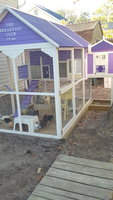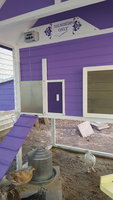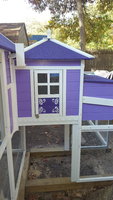cacklemama
Songster
I'm looking to make sure I don't over do it or do to little. I live at the Jersey shore about 4 miles inland so noreaster winds are a factor. I plan on using 4 gauge vinyl to wrap the run leaving an inch at the top for ventalation and firing strips to attach and not sealing at bottom leaving a 3 inch overhang on the ground. I hope thats right. My biggest concern is the coop. My chicks are only 7 weeks old and of course I've read to much and confused myself. I'm using construction sand for litter. The 2 entery doors have 1/4 gap on 3 sides I would like to drape something over them just attach it to the top and washers for weight at the bottom and let it hang. The windows have slide closures and Im vented where the roof meets the walls 1/2 On all sides. I also have a cozy heater if and when should I use it. We do get overnight temps in the single digits. So the post is so long. Want to do the best I can for them.










